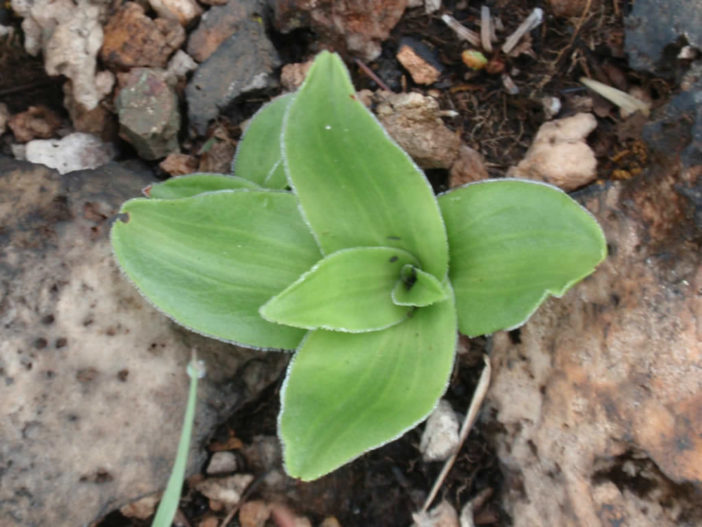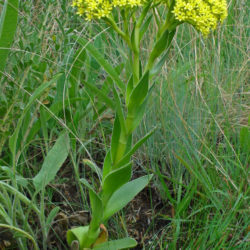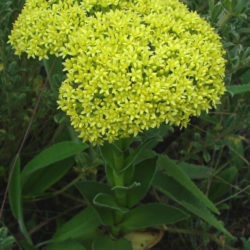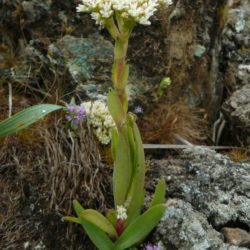Scientific Name
Crassula vaginata Eckl. & Zeyh.
Common Name(s)
Yellow Crassula
Synonym(s)
Crassula abyssinica var. vaginata, Crassula vaginata subsp. vaginata, Sedum vaginatum
Scientific Classification
Family: Crassulaceae
Subfamily: Crassuloideae
Genus: Crassula
Description
Crassula vaginata is a rosette-forming succulent, usually solitary or proliferating from the base to form a small clump. It grows up to 20 inches (50 cm) tall, including inflorescence. The stems are erect and arise annually from a fleshy to woody rootstock, dying back after flowering. The leaves are green to yellowish-green, lance-shaped, hairy or smooth, and with white cilia along the margins.
Flowers are star-shaped with five petals and appear in early summer arranged in flat-topped thyrse. They are yellow but may also be white, cream, or pink. The stem leaves grade down in size to the top.
Origin
Crassula vaginata is widespread in South Africa (Limpopo, Mpumalanga, KwaZulu-Natal, Free State, and Eastern Cape), Eswatini, and Tropical Africa. It grows in damp grassland, on slopes, often among rocks.

Hardiness
USDA hardiness zone 8a to 11b: from 10 °F (−12.2 °C) to 50 °F (+10 °C).
How to Grow and Care
Crassulas are easy to grow but susceptible to mealy bugs and fungal diseases. Overwatering is sure to be fatal, as with all succulents, so err on the side of too dry rather than too wet. Never let your plant sit in water. If you water from beneath by letting the plant sit in a saucer of water, ensure to pour off any excess water after a few minutes.
These succulents are generally started by division, offsets, or leaf cuttings. Crassulas can be easily propagated from a single leaf. Sprout leaves by placing them into a potting mix for succulents, then covering the dish until they sprout.
Repot as needed, preferably during the warm season. To repot your Crassula, ensure the soil is dry before repotting, then gently remove the pot. Knock away the old soil from the roots, removing any rotted or dead roots. Treat any cuts with a fungicide. Place the plant in its new pot and backfill it with potting soil, spreading the roots out as you repot. Leave the plant dry for a week or so, then begin to water lightly to reduce the risk of root rot.
See more at How to Grow and Care for Crassula.
Links
- Back to genus Crassula
- Succupedia: Browse succulents by Scientific Name, Common Name, Genus, Family, USDA Hardiness Zone, Origin, or cacti by Genus
Photo Gallery
Click on a photo to see a larger version.


